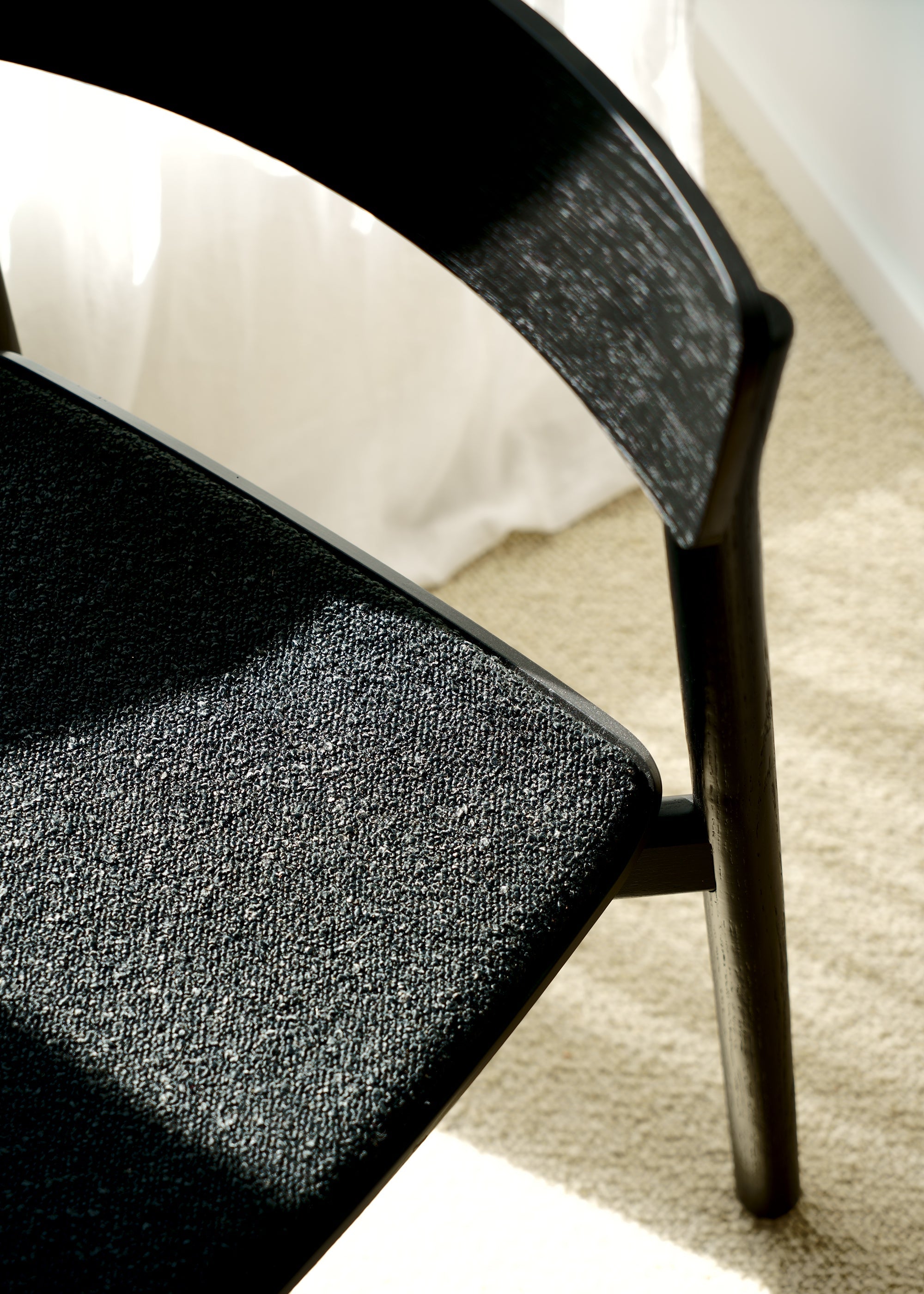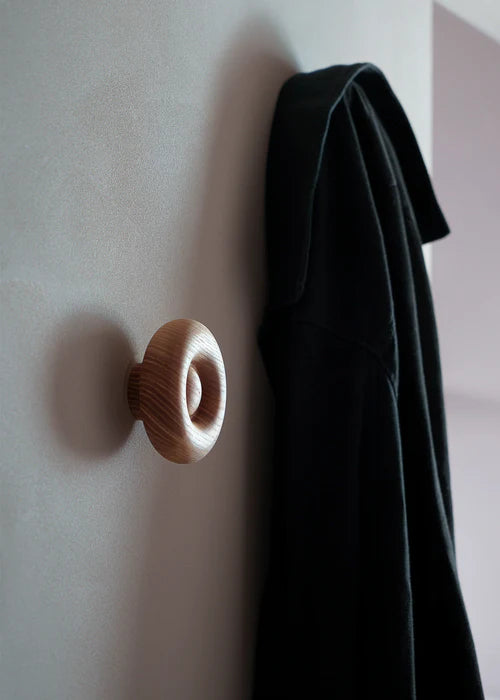"Each item is a multiplicity of elements behind which there are many people. That is why I value the relationship with the people I work with so much."
INTERVIEW
Krystian Kowalski & TAMO
Can you tell us a few words about your design background?
I always emphasize that I work a lot manually, trying to get the form I
designed in the computer by hand. I have my own pattern shop where I
create prototypes in polystyrene, substitute material or the target
material, e.g. wood. For me, it is the basis that enriches the project .
I didn't come up with anything new here, because in the design process,
it was always the case that something that was created in the
conceptual phase on a piece of paper was then tested in a physical
model. The thing is that in the work of a designer is a rarity today.
The whole process is usually transferred to producers who have the right
place and all the necessary machines and tools. There is certainly a
big saving in this, but for me as a designer, unfortunately, it is also a
loss, because some things cannot be predicted and noticed without this
stage. Outside the workshop space, the so-called In addition to the
dirty space, I also have a separate clean space where I work in a
specific design program. Although, in fact, working on a computer can be
done anywhere, even in a caravan, as it was in my case a few days ago.
Is this stage of work on the project, i.e. creating a prototype, the most important for you and has the greatest impact on the final result?
I think that the concept phase is of great importance, because it
requires a lot of focus, creativity and innovation, although it is known
in advance that some things cannot be jumped over. It's a bit like
facing the ceiling of your own head. Demanding, but also gives a lot of
satisfaction. The workshop stage involves physical effort and requires
much more time than designing something in a 3D program. You need
support, but also a lot of willingness to make this process beneficial.
After a day at the machines, I feel really tired, but I also feel that
something happened that day and I really enjoy it.
What is the main common value of working with Tamo for you?
I certainly enjoy the opportunity to work with solid wood and other
precious materials. It is a brand with a very coherent vision, it has
sincerity and consistency with its own DNA. This applies to both the
choice of raw materials and the craft part - the scale of production,
which is based on locality. This is a very romantic vision for me.
Knowing the qualities of Tamo, I could confidently propose cooperation
with Kejim. This always strengthens the brand and influences other
products. In my case, it also increases my ambitions, because I measure
my own thinking about a given brand with what someone whose work I value
thinks about it. This collision is always stimulating and allows for a
broader view. In this sense, it is a benefit for everyone.
Could you indicate the most important value that makes the product unique?
Details and nuances - it's there! As with Arche. When I think of designs
that I like, it's usually about the advancement of the concept - the
talent of the designer versus the courage of the manufacturer. You can
see when the project was a challenge for technology, machines and
required a lot of commitment during the entire production process. Often
it is in this flawlessly made detail that everything is encoded. I like
the process of decoding, recognizing a concept that is on the
borderline of art and design or is measured by some archetypes,
extracting its essence. This is what I always look for, both as a
designer and as a recipient.
Can you tell us about the target group of your projects?
I won't answer that question because I don't like categorizing people.
It is an unnecessary surplus of the corporate world, of strategic
agencies
and advertising. And I don't believe in this world.
How would you describe the main idea that accompanies you while designing?
Above all, I want to create things that have real value — and for me, the relationships that accompany the process of making a product are a vital part of that. Every object consists of many elements, and behind each of them stands a whole group of people.
That’s why I deeply value the connections with those I work with — whether it’s at the TAMO studio or in the factory during production. Without their involvement and belief in the purpose of a given product, it would be difficult to achieve high quality.
In the end, it’s the customer who matters most. I care about making everyday life in physical space just a little better — so that people can genuinely enjoy the objects they use daily.
What I appreciate in design is that, unlike art, it can reach a wider audience. It can be accessible. But that requires a broader perspective — not just relying on one’s ego or personal interpretation of a project.
You mentioned creativity. How do you release it in yourself, what influences you?
Certainly, the direct inspiration is the outside world, because although
sometimes you would like to function in isolation from what is behind
the door, it is the "outside" that is the source of motivation and
stimuli. Also the egoic ones. What feeds me, I find in art. I am
interested in combining free activities as part of creating pure art
with what design is, which must meet specific requirements that cannot
be escaped. Looking for borders or common intersecting places of art and
design. I am very impressed by the things that Constantin Brancusi did,
as well as other trends where solids and planes have to be read in a
certain way.
Was the Shapes table you designed for Tamo an attempt to combine these worlds?
Yes. With this project I had full freedom, there were no client
assumptions, hidden expectations in the background or even a brief. I
only heard that a solid wood table was to be created. The lack of
limitations made me realize that I was dealing with a different kind of
thinking and sensitivity of a designer for a designer. I was able to
break away from the rigors of production and focus on what I felt. This
triggered ambitious stimuli that are extremely stimulating at work. As a
designer in such a situation, I want to give even more of myself. In
Shapes, each model is made of four basic solids that can be put together
in very different ways, thus obtaining a completely different design.
So I started to synthesize some solids, introduce them into different
relationships to each other so that new systems would emerge. This free
operation with shapes meant that, apart from one optimal one, which I
chose, a whole collection began to be created, which I did not take into
account at the design stage. In this way, variations on these objects
began to live their own lives, also allowing for some kind of
customization. It was of great value to me. .
Was it as satisfying to create the Arche chair?
Extremely. Arche was created from the archetype of simplicity and
uncompromising nature. These are the components of this project. I
wanted to maintain the uncompromising nature of the shape, to keep the
archetype in its original stage. At the same time, I wanted the chair to
be visually pleasing and to encourage people to use it. Arche is the
maximum simplicity of the chair while drawing out details that make it
not just another simple chair. We are talking about nuances that affect
the whole and they make this project. Without them, a very raw and
unhewn product would be created. The final one is something on the verge
of an archetype, but it has a certain elegance and gentleness..
And what about the Blop hanger?
Blop is sort of a side effect, a splinter of good communication with
Tamo. In cooperation, it is important for me to get to know each other
better with each project, also on a social level. It must be accompanied
by the pleasure of communing with each other, talking about work and
more. So we had this conversation once where the phrase "I have a good
turner" was mentioned and before I knew it my thoughts and concepts that
I had in my head and that I had no plan for - I didn't even know what
exactly they were - led me to this hanger . In this cooperation, there
is no more sniffing, lurking, checking. It's just pure flow. When that
tipping point is crossed and unfamiliarity gives way to openness, even
better things start to emerge.
DESIGNED BY
Krystian Kowalski































